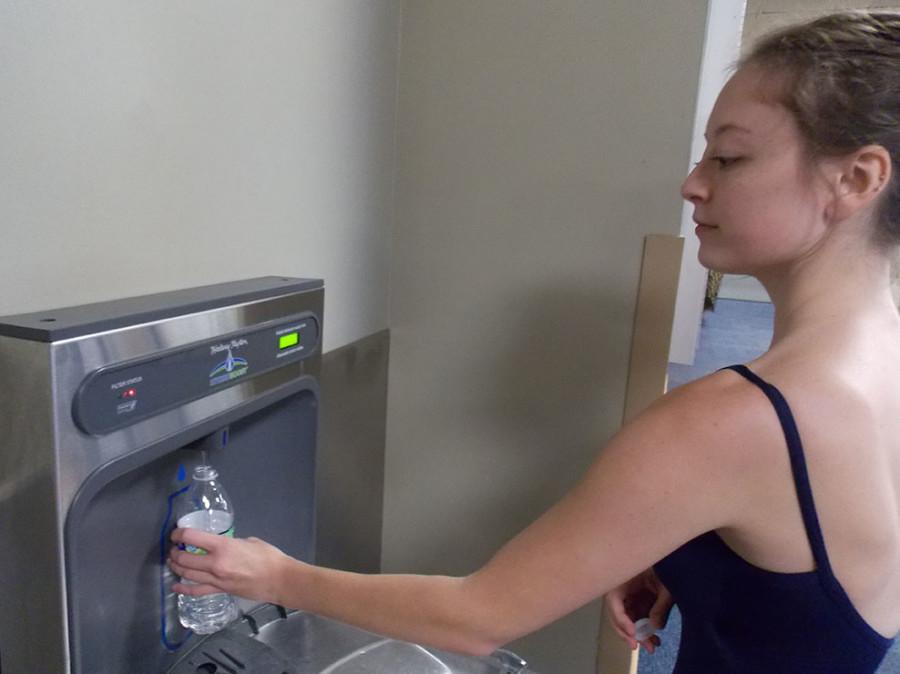New Orleans takes care in providing safe water
Julia Maples, music industry studies senior, refills her water bottle before ballet class in Roussel Hall.
December 6, 2015
New Orleans recently issued its 10th boil water advisory in a five-year span, but for Joshua Hughes, he’s still cautious about the water.
“I’ll still think twice about what I’m drinking. They tell you that your water is purified, but then they tell you that you have to boil it,” Hughes said.
Despite the common advisories, the Sewerage and Water Board takes the water purification process seriously when it comes to providing the public with safe drinking water.
When the city’s water supply is drawn from the Mississippi River, it gets filtered and tested for contaminants such as arsenic, lead, nitrate, nitrogen and cryptosporidium, a bacteria that causes diarrhea. Officials at the Sewerage and Water Board’s processing plants work around the clock to ensure that nothing unsafe goes into the
tap water.
Cryptosporidium has only been detected in the city’s water supply three times twice in 1998 and once in March of 2014. The levels of the bacteria were so low that the chlorine added during the disinfection process killed all traces of it. The arsenic and nitrate levels were both below the maximum Environmental Protection Agency allowed level.
According to the city’s quality water report, S&WB adds lime and chloramine to provide corrosion control, stabilization and to disinfectant the raw water. They also add fluoride to the water to prevent tooth decay.
Robert Jackson, S&WB community relations director, said that the city is doing all that it can to guarantee safe and beneficial drinking water to its citizens.
“No lead is present in the treated water leaving the plants, but older homes or newly renovated homes may experience higher lead levels than others,” Jackson said.
Jackson guarantees that if dangerous contaminants are present in the water, the public would be immediately notified.
Traces of prescription drugs have been found in the public water supply.
New Orleans water department officials said the city’s water had not been tested for pharmaceuticals, but in a 2008 NBC news report, former Tulane University professor Greg Boyd found pain reliever, sex hormone and anti-cholesterol drug in treated drinking water.
Independent researcher found pharmaceuticals in the city’s water, Robert Thomas, director for the center of environmental communication at Loyola, said that finding medical drugs in a municipal water source is typical.
“The drugs are in the body already,” Thomas said. “The presence of these prescription drugs in the city’s water are concerning, but they are not threatening; at least no studies have said they are.”
The water system is out of date. Ten years after Hurricane Katrina, New Orleans is still negotiating with the Federal Emergency Management Agency to get more than $1 billion to fix the damage that the levee breach did to the city’s water system.
In the past year, there have been boil water advisories in Gretna, Slidell, Madisonville and St. John the Baptist Parish. St. Bernard and Terrebonne Parishes have even found deadly brain-eating amoebas in their water.
As a consolation prize and testament to the water quality, in 1984, New Orleans was voted for having the best tasting tap water against 40 other cities by the American Water Works Association.







